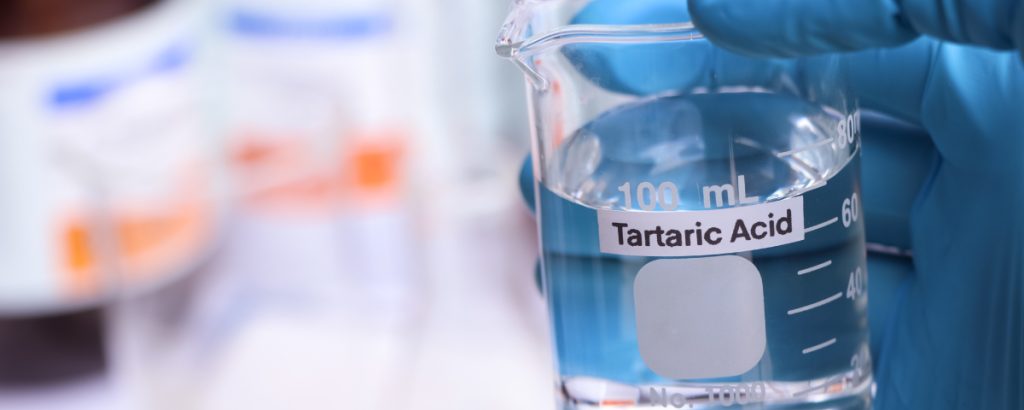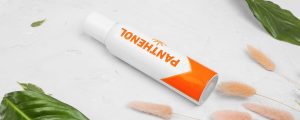Tartaric acid is a naturally occurring organic acid that is found in various plants, particularly grapes. It’s one of the key acids responsible for the tart taste in grapes and certain wines. While it’s widely known for its role in the culinary world, tartaric acid also offers a range of benefits for skincare. In this blog, we will explore what is tartaric acid, its benefits for the skin, and how to incorporate it into your skincare routine.
What is Tartaric Acid?
Tartaric acid, also known as 2,3-dihydroxybutanedioic acid, is a crystalline organic acid that occurs naturally in grapes, bananas, tamarinds, and some other plants. In the world of winemaking, it’s commonly known as cream of tartar (tataric acid plus potassium hydroxide), and it plays a vital role in stabilizing and improving the texture of whipped egg whites and cream.
Tartaric Acid Benefits for Skin
Here are the different ways in which Tartaric acid benefits your skin:
1. Exfoliation: Tartaric acid is an alpha-hydroxy acid (AHA), which means it is effective at exfoliating the skin’s surface. It works by loosening and removing dead skin cells, leaving your skin smoother and brighter. This exfoliating action can help reduce the appearance of fine lines, acne scars, and uneven skin tone.
2. Anti-Aging Properties: AHAs like tartaric acid stimulate collagen production in the skin. Collagen is a protein that helps keep the skin firm and youthful-looking. By promoting collagen synthesis, tartaric acid can help reduce the signs of aging, such as wrinkles, fine lines and sagging skin.
3. Acne Treatment: Tartaric acid has antimicrobial properties that can help combat acne-causing bacteria. Additionally, its exfoliating effect can prevent pores from becoming clogged, reducing the occurrence of breakouts.
4. Skin Brightening: Regular use of tartaric acid for skin can help fade dark spots and hyperpigmentation, giving your skin a more even and radiant complexion.
5. Improves Skin Texture: If you struggle with rough or uneven skin texture, tartaric acid can help smooth it out, leaving your skin feeling soft and smooth.
6. Enhances Product Absorption: Tartaric acid can also improve the absorption of other skincare products. When used in combination with serums and moisturizers, it helps these products penetrate deeper into the skin, making them more effective.
How to Use Tartaric Acid for Skin?
Incorporating tartaric acid into your skincare routine is relatively easy. Here are some tips on how to use it:
1. Tartaric Acid Products: Look for skincare products that contain tartaric acid as one of their ingredients. These can include serums, toners, and exfoliating creams. Start with a product with a lower concentration and gradually increase as your skin gets accustomed to it.
2. Patch Test: Before applying any tartaric acid product to your face, it’s essential to do a patch test on a small area of your skin to check for any adverse reactions or allergies.
3. Sun Protection: Tartaric acid, like other AHAs, can make your skin more sensitive to the sun. Always apply sunscreen with a broad-spectrum SPF of at least 30 when using tartaric acid products during the day.
4. Follow Instructions: Read and follow the usage instructions provided by the product manufacturer. Overusing tartaric acid or leaving it on for too long can lead to irritation.
5. Consistency is Key: To see the best results, use tartaric acid products consistently but don’t overdo it. Using them 2-3 times a week is often sufficient for most people.
6. Consult a Dermatologist: If you have sensitive skin or any existing skin conditions, it’s advisable to consult a dermatologist before adding tartaric acid to your skincare routine.
Conclusion
Tartaric acid is a versatile ingredient with numerous benefits for the skin. Its ability to exfoliate, brighten, and improve skin texture makes it a valuable addition to any skincare regimen. However, like any skincare product, it’s essential to use tartaric acid responsibly and in moderation to avoid potential side effects. If used correctly, tartaric acid can contribute to a healthier, more radiant skin.













